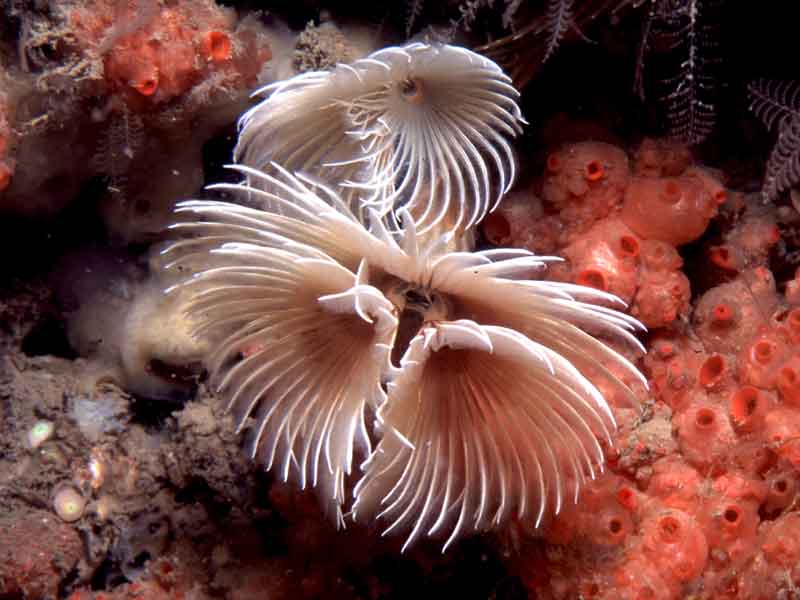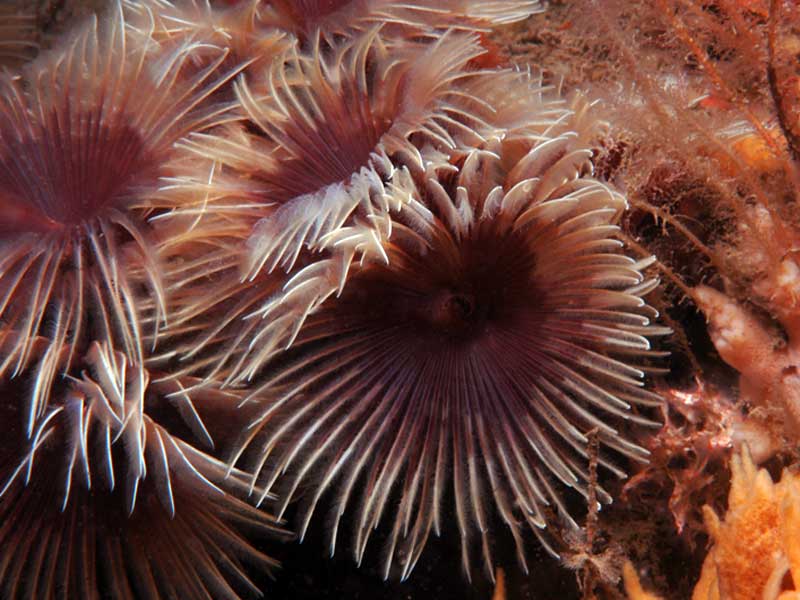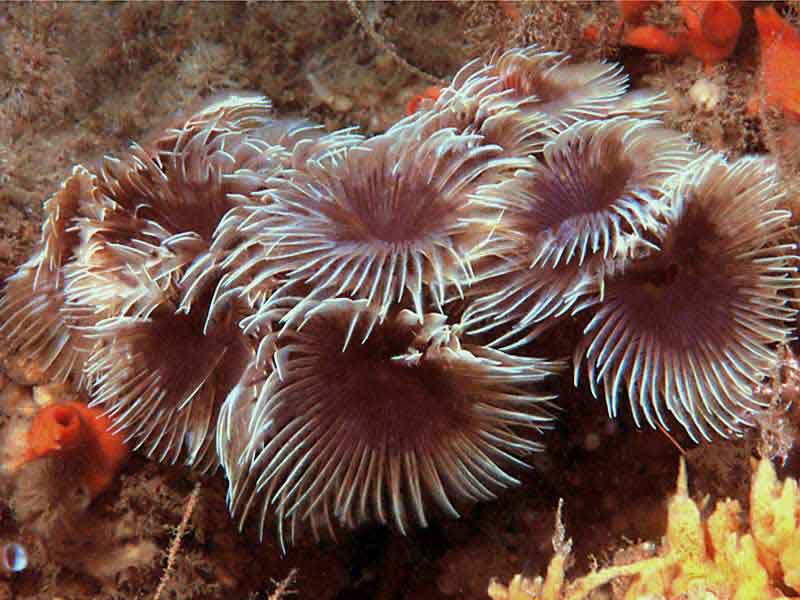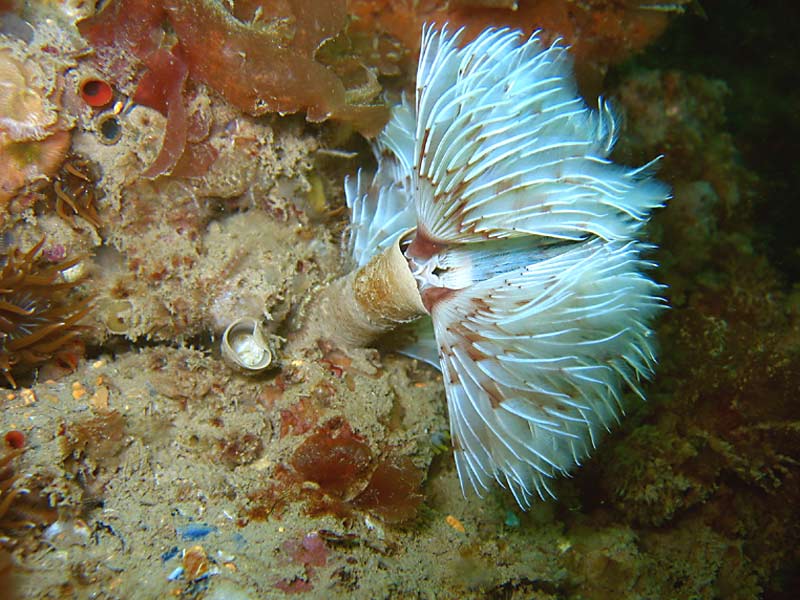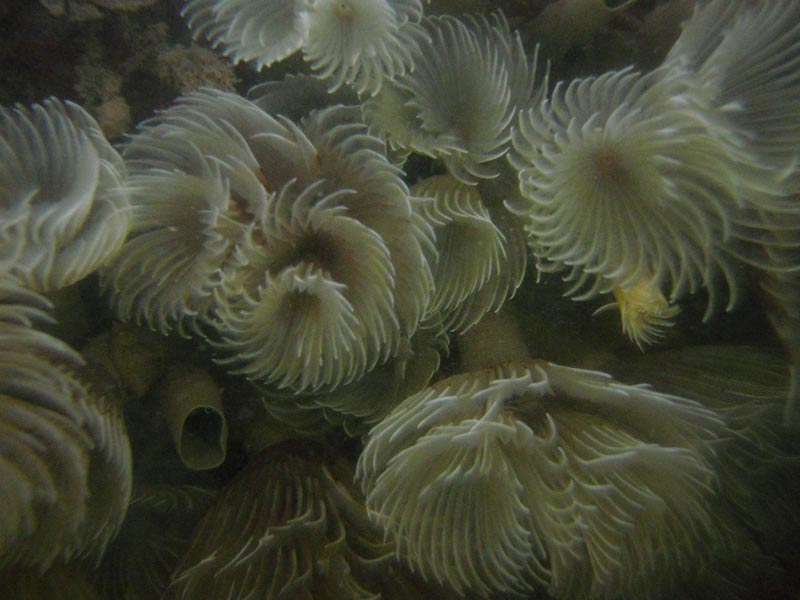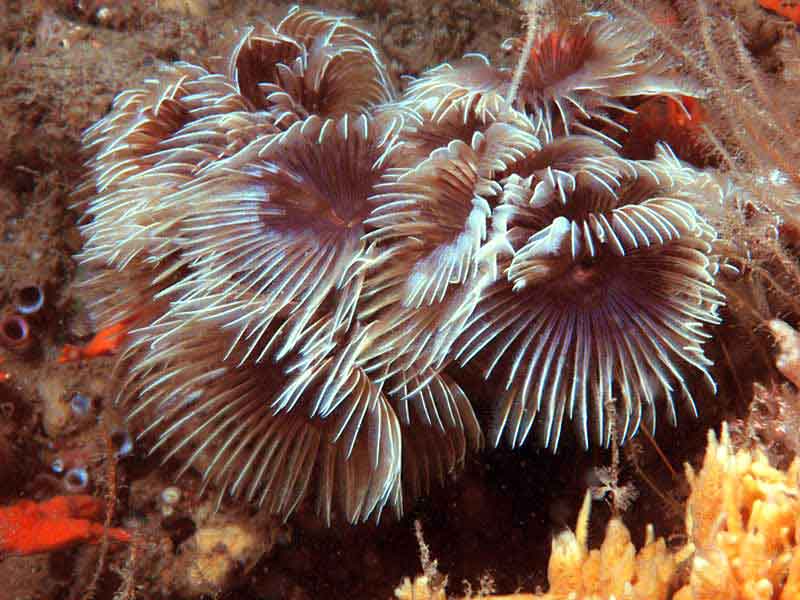Twin fanworm (Bispira volutacornis)
Distribution data supplied by the Ocean Biodiversity Information System (OBIS). To interrogate UK data visit the NBN Atlas.Map Help
| Researched by | Paul Gregory | Refereed by | Admin |
| Authority | (Montagu, 1804) | ||
| Other common names | - | Synonyms | - |
Summary
Description
Recorded distribution in Britain and Ireland
Widespread in the south west of England, with scattered records from Flamborough Head, Ireland, the Isle of Man and western Scotland.Global distribution
-Habitat
Shaded rocky overhangs, or residing in rock crevices in the sublittoral. May sometimes be found in deep rock pools in the intertidal. Found to a depth of at least 30 m.Depth range
-Identifying features
- Tube of mud/silt-mucoid outer layer, body <10 cm, 1 cm diameter.
- White or very pale chaetae (bristles) arranged in two C-shaped spirals/whorls, with paired composite eyes scattered on the outside of tentacles.
Additional information
No text enteredListed by
- none -
Bibliography
Bruce, J.R., Colman, J.S. & Jones, N.S., 1963. Marine fauna of the Isle of Man. Liverpool: Liverpool University Press.
Fauchald, K., 1977. The polychaete worms. Definitions and keys to the orders, families and genera. USA: Natural History Museum of Los Angeles County.
Gibson, R., Hextall, B. & Rogers, A., 2001. Photographic guide to the sea and seashore life of Britain and north-west Europe. Oxford: Oxford University Press.
Hayward, P., Nelson-Smith, T. & Shields, C. 1996. Collins pocket guide. Sea shore of Britain and northern Europe. London: HarperCollins.
Hayward, P.J. & Ryland, J.S. (ed.) 1995b. Handbook of the marine fauna of North-West Europe. Oxford: Oxford University Press.
Howson, C.M. & Picton, B.E., 1997. The species directory of the marine fauna and flora of the British Isles and surrounding seas. Belfast: Ulster Museum. [Ulster Museum publication, no. 276.]
Nash, R. & Keegan, B.F., 2003. Aspects of the feeding biology of the fanworm Bispira volutacornis (Polychaeta: Sabellidae). Journal of the Marine Biological Association of the United Kingdom, 83, 453-456.
Datasets
Centre for Environmental Data and Recording, 2018. Ulster Museum Marine Surveys of Northern Ireland Coastal Waters. Occurrence dataset https://www.nmni.com/CEDaR/CEDaR-Centre-for-Environmental-Data-and-Recording.aspx accessed via NBNAtlas.org on 2018-09-25.
Environmental Records Information Centre North East, 2018. ERIC NE Combined dataset to 2017. Occurrence dataset: http://www.ericnortheast.org.ukl accessed via NBNAtlas.org on 2018-09-38
Fenwick, 2018. Aphotomarine. Occurrence dataset http://www.aphotomarine.com/index.html Accessed via NBNAtlas.org on 2018-10-01
NBN (National Biodiversity Network) Atlas. Available from: https://www.nbnatlas.org.
OBIS (Ocean Biodiversity Information System), 2025. Global map of species distribution using gridded data. Available from: Ocean Biogeographic Information System. www.iobis.org. Accessed: 2025-05-11
South East Wales Biodiversity Records Centre, 2018. SEWBReC Worms (South East Wales). Occurrence dataset: https://doi.org/10.15468/5vh0w8 accessed via GBIF.org on 2018-10-02.
Citation
This review can be cited as:
Last Updated: 22/01/2007

